Many cats love to chew on grass. A treat of a planter of cat grass can bring a lot of joy to a cat. Unfortunately, cats can also chew on other plants or brush up against flowers that can be toxic to them.
You may be bringing poisonous plants indoors without knowing it. Some cat owners will buy plants without considering if it will be harmful to their pets and not just cats.
They may also bring in some plants, put them on top of furniture or cabinets while they are out where cats might jump up to reach them.
Cats are explorers, and love playing or simply lazing around so make sure your indoors and any outdoor cat areas are safe from toxic plants.
Here are some plants and flowers to beware of if you have cats. Always doublecheck with ASPCA’s list of toxic and non-toxic plants for cats before bringing in new plants to your house or in the outdoor areas your cat has access to.
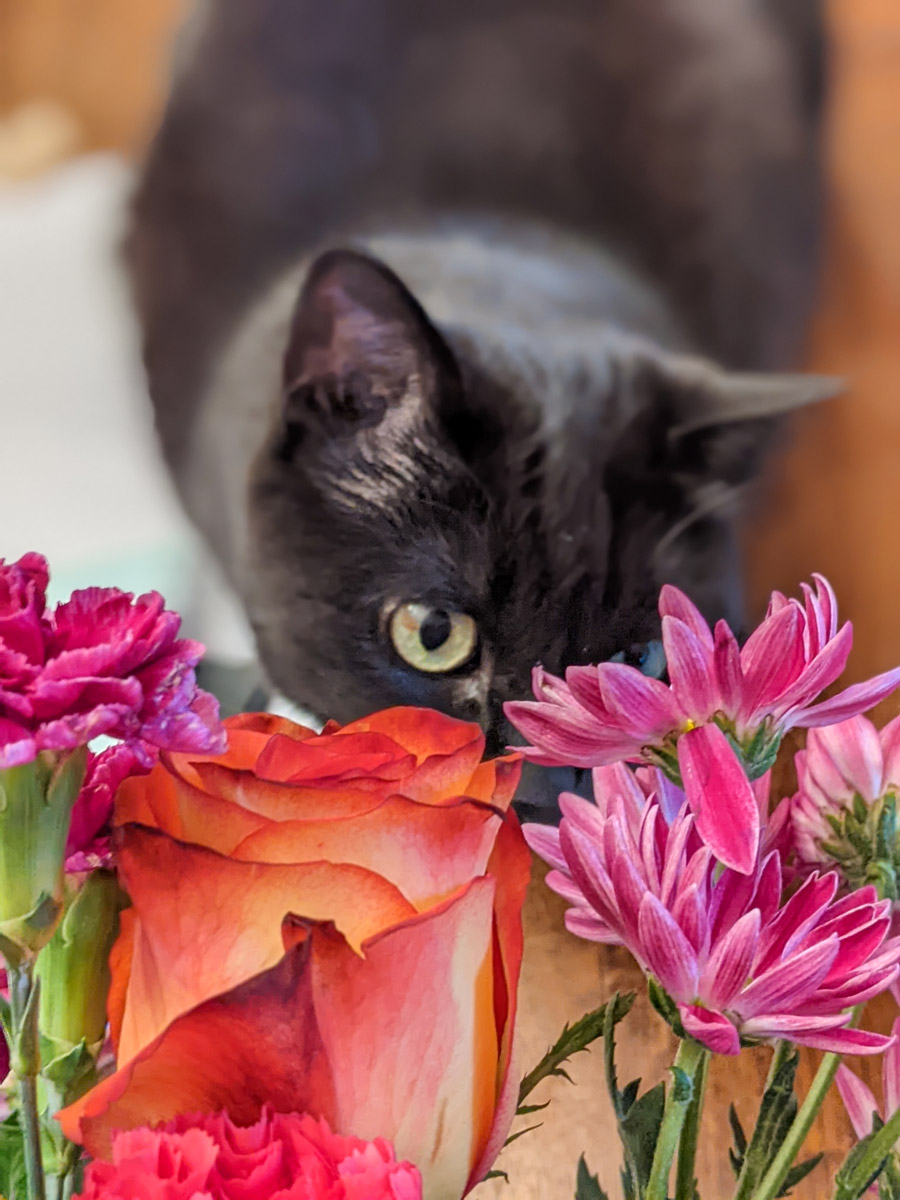
Aloe
Because of its many benefits to people, the Aloe vera plant is handy to have around. Most homeowners have this plant in their garden or inside their house. There are different sizes that can reach a height of thirty to forty feet.
This plant, no matter how useful, can be toxic to your cats. The poison found on this plant is glycosides, anthracene, and anthraquinones.
Symptoms you will notice if your cat ingested a part of this plant is diarrhea, vomiting, and loss of appetite.
Asparagus Fern
The poison found in asparagus fern (Asparagus setaceus) is called sapogenin. It can cause diarrhea, vomiting, and abdominal pain. Skin inflammation may also occur where rashes appear on your cat. This happens if your cat rubs on any part of the plant.
If you can’t throw them away and you want them in your backyard, make sure that your cat will not get to these plants.
Begonias
This plant can tolerate a low lighting environment and is preferred by most homeowners. The Begonia (family Begoniaceae) come in a variety of colors and shapes. It is inviting when placed in the garden, backyard, or house.
The toxin found in Begonias is oxalate.
Symptoms once ingested by your cats include drooling, vomiting, mouth irritation, difficulty in swallowing. Serious poisoning may lead to liver failure.
Caladium
Because of the beautiful and lively green color and heart-shaped leaves, Caladium makes an impressive addition in the garden and even indoors.
When chewed by cats may cause extreme mouth irritation and swelling. The tongue and throat may swell and can cause difficulty in swallowing. There is also excessive drooling as well as continuous vomiting.
Also, watch out for pawing at the face or mouth, and loss of appetite.
The culprit that causes the poisoning is called Calcium Oxalate, a type of salt-containing oxalate acid.
Lilies
You can find lilies bloom in yellow, white, pink, and orange (genus Lilium). They really make your home or patio beautiful because of their bright and fascinating display of colors.
What is toxic to your cat are the flowers, pollen, stem, and leaves. Even the water in the vase where the lilies are soaked in is likewise dangerous for cats.
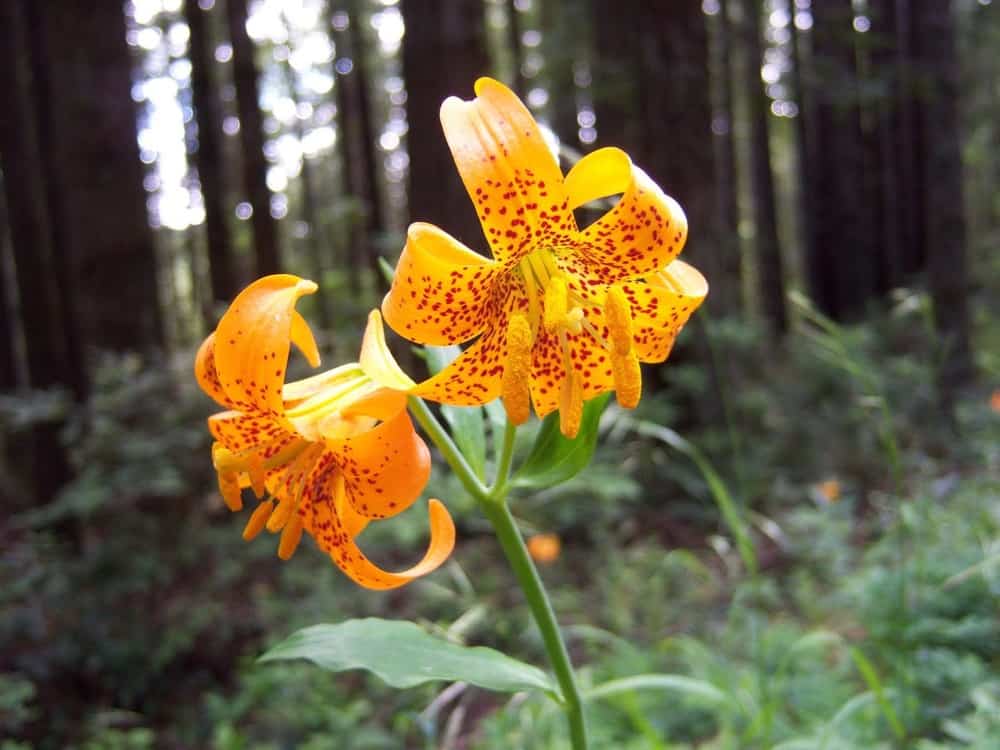
The toxin can cause kidney failure in a cat. Within twelve hours of ingestion, signs you will notice include drooling, loss of appetite, vomiting, and lethargy. Kidney failure sets in within two to three days if the poison isn’t immediately detected.
Although there are a few plants with “lily” on their name, it will not cause fatal consequences but show symptoms like vomiting and diarrhea that will go away by themselves.
Kalanchoe
We also know this plant as the Chandelier plant, the devil’s backbone, among others (family Crassulaceae). The plant contains toxins, bufadienolides.
Kalanchoe is popular as houseplants because of the different arrays of color that really beautify the property and the inside of the house. However, beware of this plant if you have a cat cause it can cause gastric upset, excessive salivation, and diarrhea.
Ingestion of more than a few leaves may also lead to severe poisoning. Symptoms include irregular heartbeat, cold extremities, extreme weakness, collapse, and even death, once the cat suffers cardiac arrest.
Oleander
We often see oleander (Nerium oleander) in the garden or backyard and the plant is used for its evergreen appearance and beautiful flowers. This plant is not just poisonous to cats but also to dogs, horses, and cattle.
The culprit is a poison identified as cardenolides or bufadienolides. All parts of the plant are toxic to cats, and once ingested, cats will show symptoms of drooling, nausea, vomiting, abnormal heart rhythm, tremors, and seizures.
The level of poisoning differs for each cat and will depend on the amount consumed or digested.
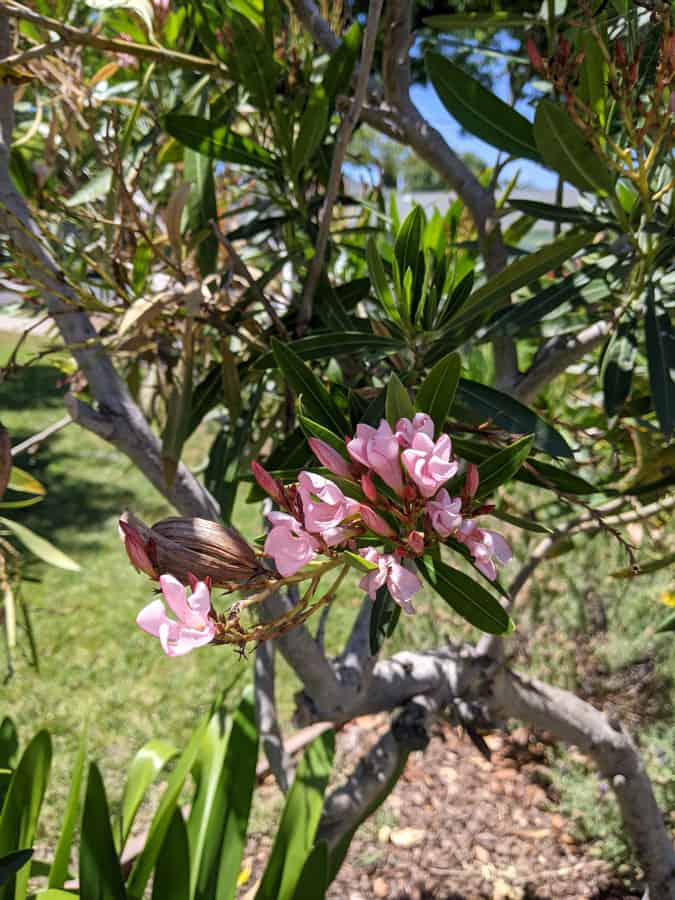
Sago Palm
The Sago palm (Cycas revoluta) is also known as cycads, zamias, cardboard palm, or coontie palm. All parts are poisonous, but the seeds are highly toxic. The toxin is called cycasin.
Sago Palm may look like real palms, that is why it is popular as house plants. However, if your cat chews on the leaves, it may lead to liver damage and worse, death.
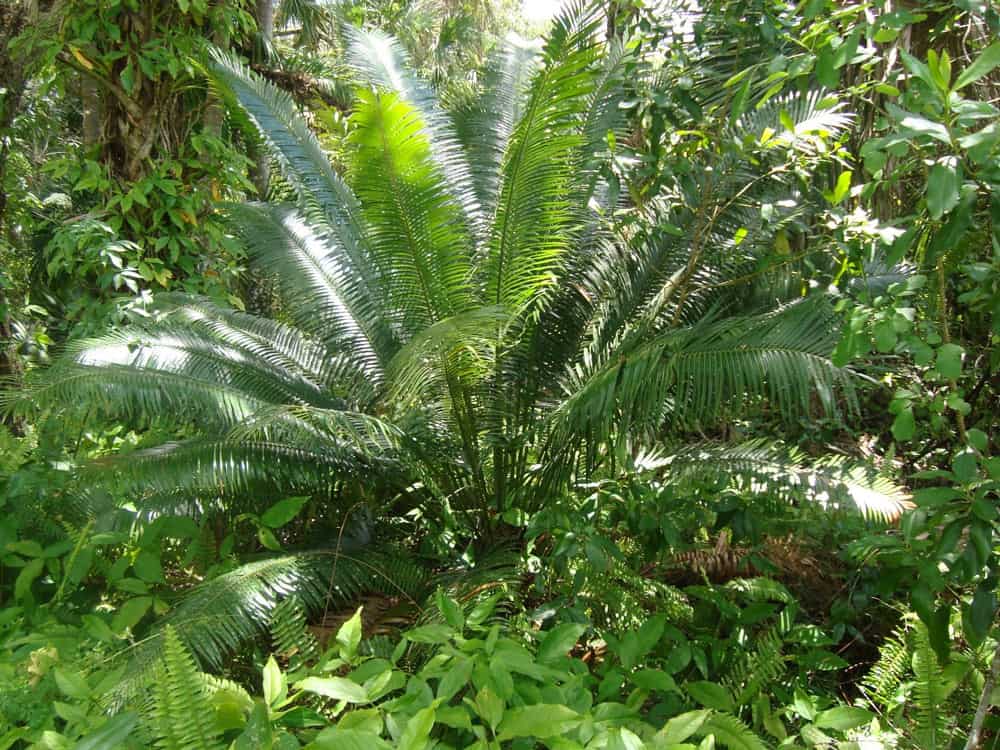
Tulips
Yes, tulips (Tulipa) are lovely, and they are popular. They add aesthetics to the garden and the house. Sadly, tulips are toxic to your cat, especially the bulb part. Any part of the plant is toxic, but the most toxins, tulipalin A and B, are found on the bulb.
Signs you should watch out for include drooling, diarrhea, vomiting, tremors, and even depression.
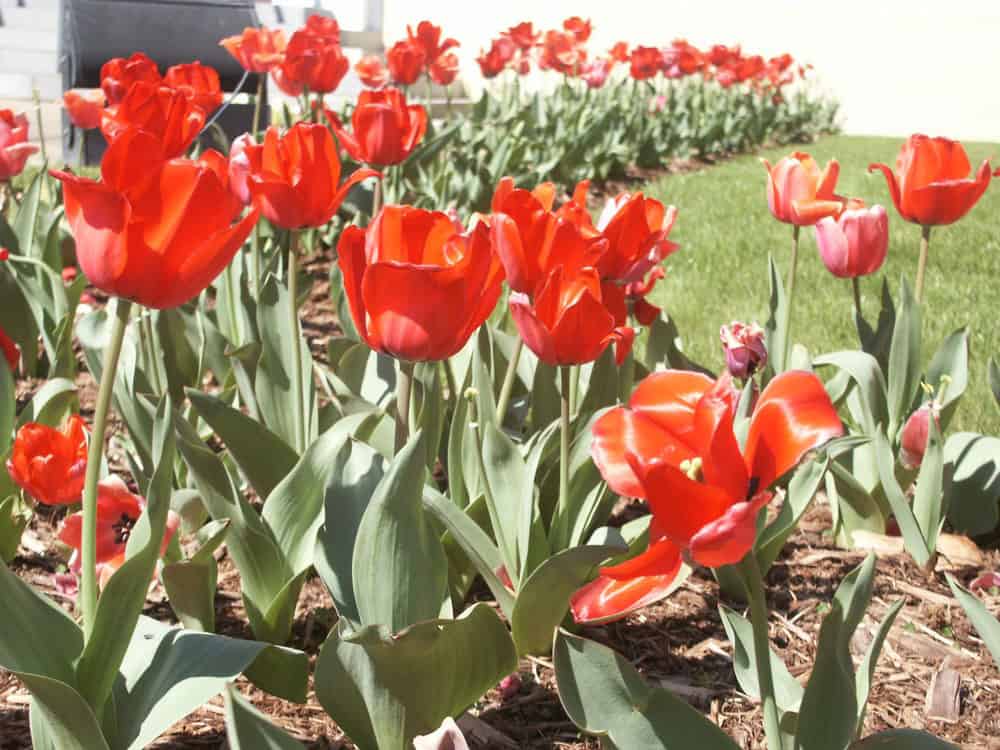
Philodendron
Philodendron family (Araceae) plants that can be harmful to cats include heartleaf, fiddle-leaf philodendron, and Swiss cheese plant.
The leaves are poisonous once ingested by the cat because they contain oxalate crystals. The symptoms you should watch out for are drooling, signs of abdominal discomfort or pain, cramps, labored breathing, low energy, mouth, and eye irritation.
For the worst-case scenario, ingestion of philodendron may lead to kidney failure, seizures, and coma, possible if your cat chewed a sizable amount of philodendron leaves.
Jade plant
The Jade plant (Crassula ovata) will survive even with less water for days which is the reason many homeowners like it inside their home.
All parts of the plant are toxic to cats. Symptoms of poisoning include vomiting and diarrhea.
Always Check to Make Sure Your Plants are Safe for Cats
Knowing what is harmful to your cat is still the best prevention. This list is just some of the plants known to be harmful to cats. To be safe, be sure to check if any of the plants or flowers you bring in to your house or plant in your outdoor space are safe for your pets.
Signs of plant poisoning in cats
Be sure to look out for the signs of plant poisoning in your cat. These signs can include drooling, vomiting, diarrhea, loss of appetite, increased thirst and urination, irregular heartbeat, dilated pupils, difficulty breathing, lethargy, and seizures.
Once you see your cat exhibiting the above symptoms, immediately get them checked by the vet. Bring the plant they chewed on for faster diagnosis and treatment.
Plants that are safe for cats
Here’s a selection of cat-friendly plants that you should consider if you want to add some greenery to your indoor space:
- Spider Plant: These are non-toxic to cats and have an attractive arching foliage that adds a nice touch to any interior.
- Areca Palm: Also known as the butterfly palm, Areca palm is safe for cats and has an added benefit of being an excellent air purifier.
- Boston Fern: This is a non-toxic houseplant that thrives in indirect sunlight. It adds a touch of greenery and purifies the air as well.
- Blue Echeveria: This is a safe succulent for cats. It’s also low maintenance, requiring only a well-draining soil and bright light.
Read next: Christmas Plants to Avoid Around Cats
References
Buzhardt, L. (n.d.). Sago palm poisoning. VCA. https://vcahospitals.com/know-your-pet/sago-palm-poisoning
Lovely lilies and curious cats: A dangerous combination. (2019, August 19). U.S. Food and Drug Administration. https://www.fda.gov/animal-veterinary/animal-health-literacy/lovely-lilies-and-curious-cats-dangerous-combination
Potentially dangerous items for your pet. (2021, March 26). U.S. Food and Drug Administration. https://www.fda.gov/animal-veterinary/animal-health-literacy/potentially-dangerous-items-your-pet
Toxic and non-toxic plant list – Cats. (n.d.). ASPCA. https://www.aspca.org/pet-care/animal-poison-control/cats-plant-list
This article was originally written on May 18, 2021 and has since been updated.







